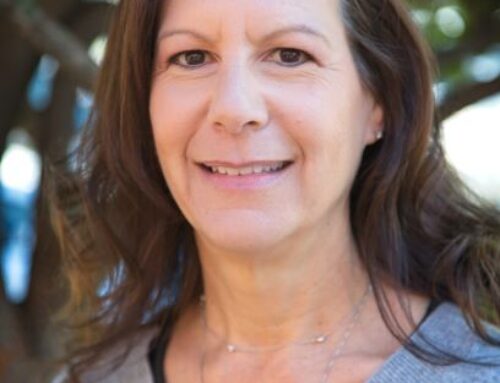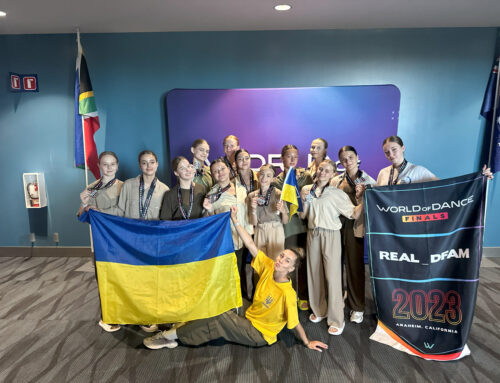Martin Murphy students, staff and parents experience awe-inspiring science
Published in the August 30 – September 12, 2017 issue of Morgan Hill Life
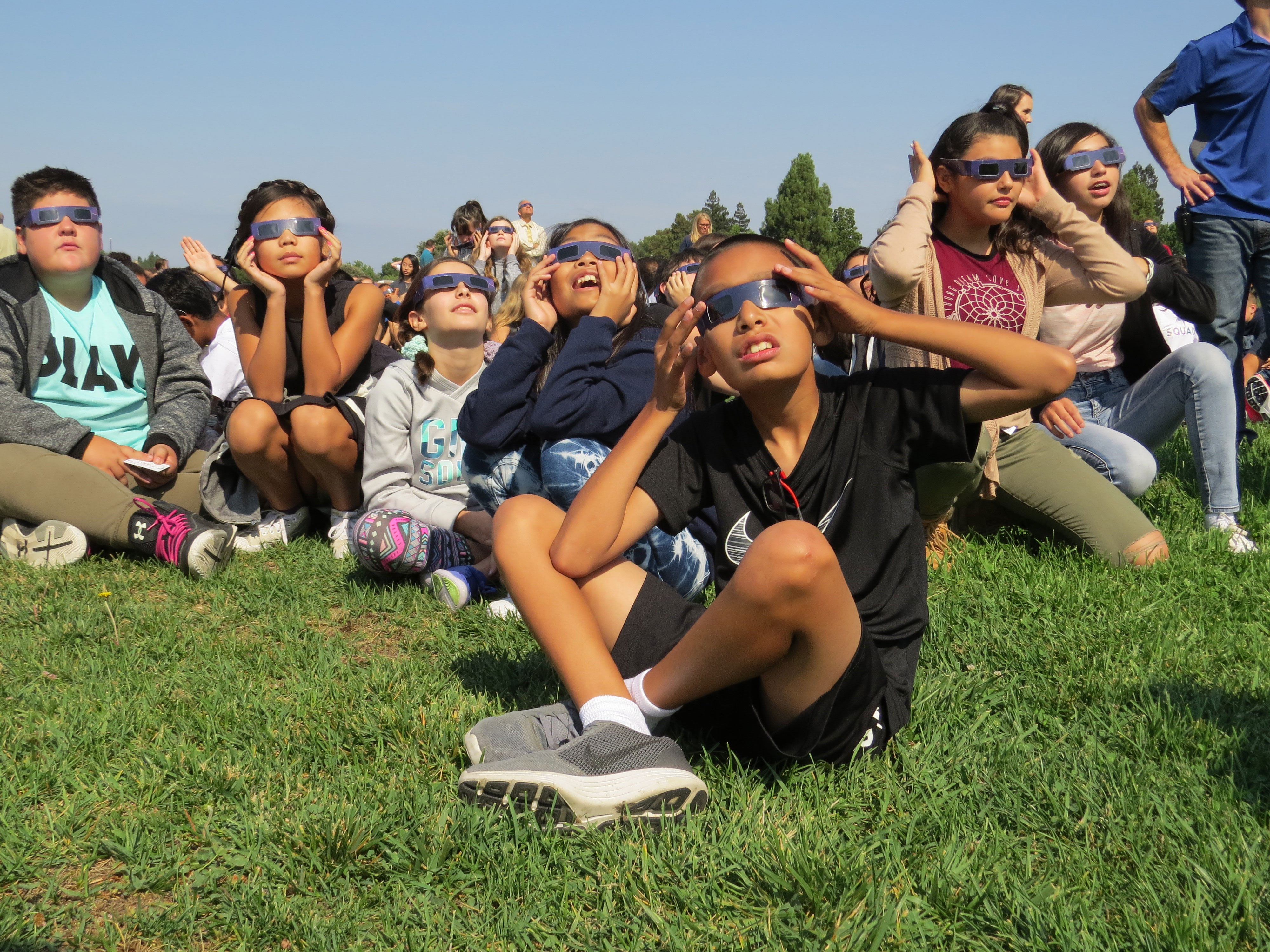
Photo courtesy Kimberly Beare
Martin Murphy Middle School students, staff and family watch the Aug. 21 solar eclipse.
The sun, moon and Earth aligned the morning of Aug. 21 — and millions of Americans gathered to gaze at an awe-inspiring astronomical alignment called the Great American Eclipse. The viewers included the 735 students at Martin Murphy Middle School who assembled around 10 a.m. on the lawn of a nearby park and put on special solar filter glasses to see a red-tinted crescent forming in the sky.
Among the sixth-graders who witnessed the biggest solar eclipse in America in a hundred years, Ben Ledwith, 11, said he was impressed with the wonder of the phenomena. The San Jose-based school was hundreds of miles south of the path of the totality of the solar eclipse, but the students still could see the partial eclipse, with about three-quarters of the sun blocked out as the moon passed in front of it to cast a shadow swath on planet Earth. The previous Friday, Martin Murphy’s science teachers instructed the students on how math is used to figure out where and when eclipses occur and how to safely view them to prevent the sun’s powerful light from burning the eye’s retina.
“They gave us glasses and we looked at the moon and the sun and it was really cool,” Ledwith said. “It looked like a smile up there in the sky. I love to think how Mother Nature can provide such beautiful things.”
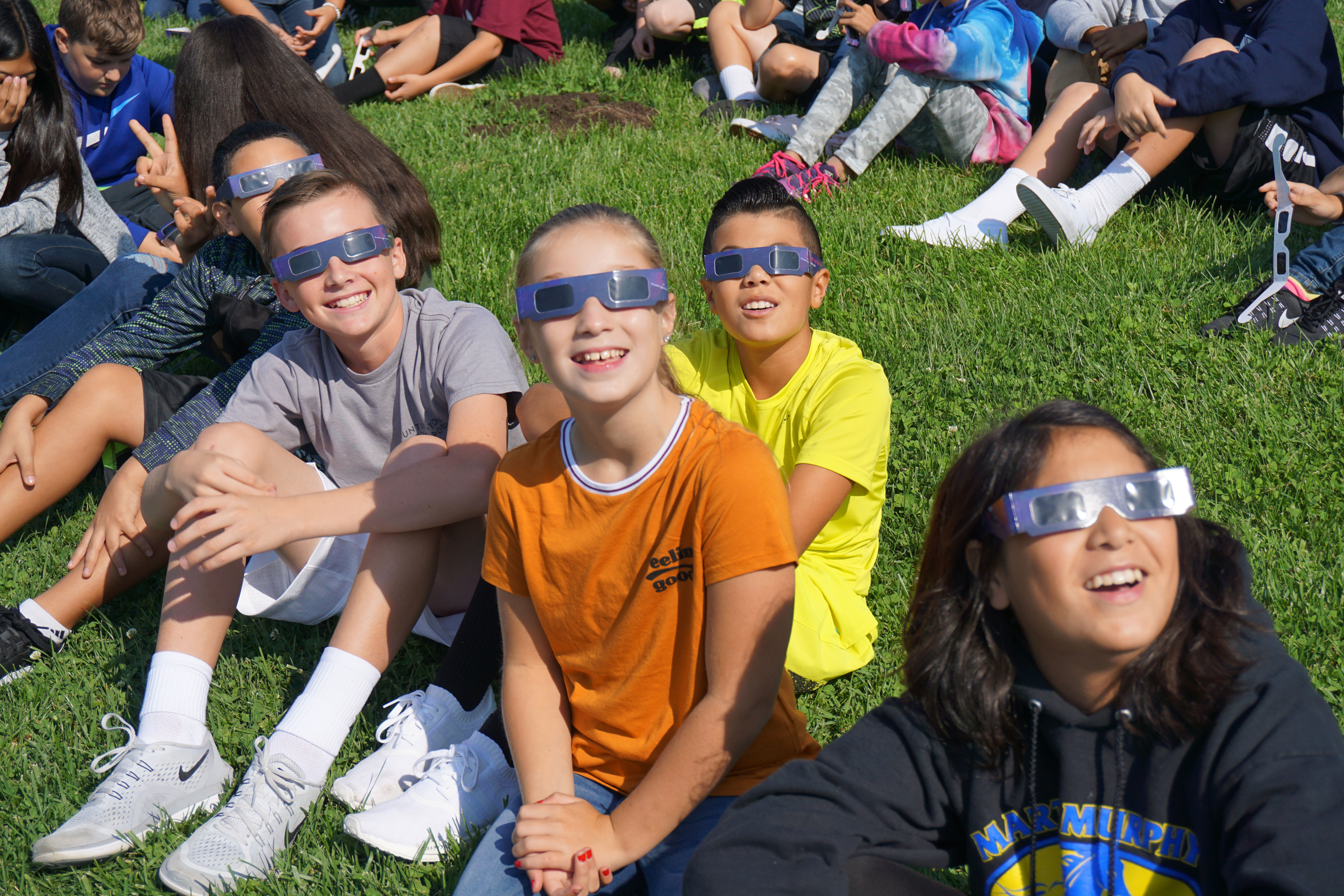
Photo by Kimberly Beare
Martin Murphy students watch the solar eclipse that awed the nation.
Maelani O’Connor, 13, an eighth-grader, was equally awed.
“It’s my first time watching a solar eclipse and it’s pretty cool because I don’t think we’ll ever get a chance to do this again,” she said. “It’s a great learning opportunity for all the kids who are out here.”
O’Connor said she once saw a lunar eclipse, a more common celestial event that occurs when the Earth is aligned in the middle of a straight-line conjunction between the sun and moon.
“In a lunar eclipse, the moon turns a blood orange color,” she said. “The Earth’s shadow is on the moon.”
Kaliya Bond, 13, another eighth-grader, said she likes learning about science and thought bringing the entire student body out to experience the eclipse together helped them learn about astronomy better than reading about it in a textbook. Science involves experimentation and observation and collecting data to analyze, she said.
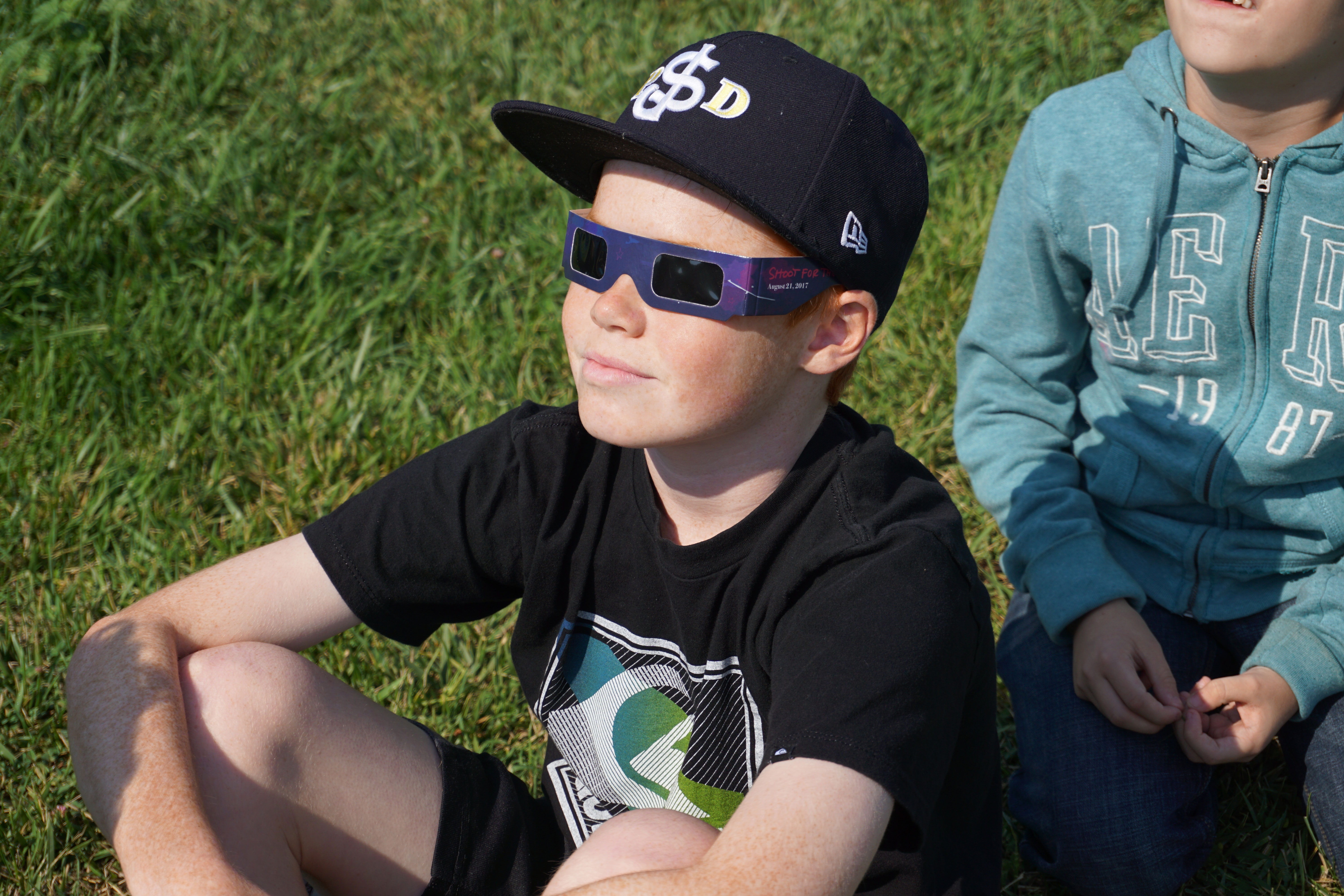 “(The eclipse) opens new learning doors,” she said. “Science is hands on. It makes it more interesting for people who are learning. It’s easier to retain the information if you’ve experienced it.”
“(The eclipse) opens new learning doors,” she said. “Science is hands on. It makes it more interesting for people who are learning. It’s easier to retain the information if you’ve experienced it.”
One thing about the eclipse the Martin Murphy students learned was that the moon blocking out the light from the central area of the sun enabled scientists in the totality region to observe the corona. The corona is the jacket of gases that make up the sun’s atmosphere. Magnetic fields generated by the sun move charged particles in the corona to create streamers, loops and plumes.
“It’s like the light around it,” Bond said. “In a (total) solar eclipse, the moon covers the majority of the sun and so the corona is all that’s visible.”
Bringing the middle school students outside to experience a rare solar eclipse helps them gain a greater appreciation for the wonders of science and encourages them to want to learn more, said Ramon Zavala, assistant superintendent of educational services at Morgan Hill Unified School District.
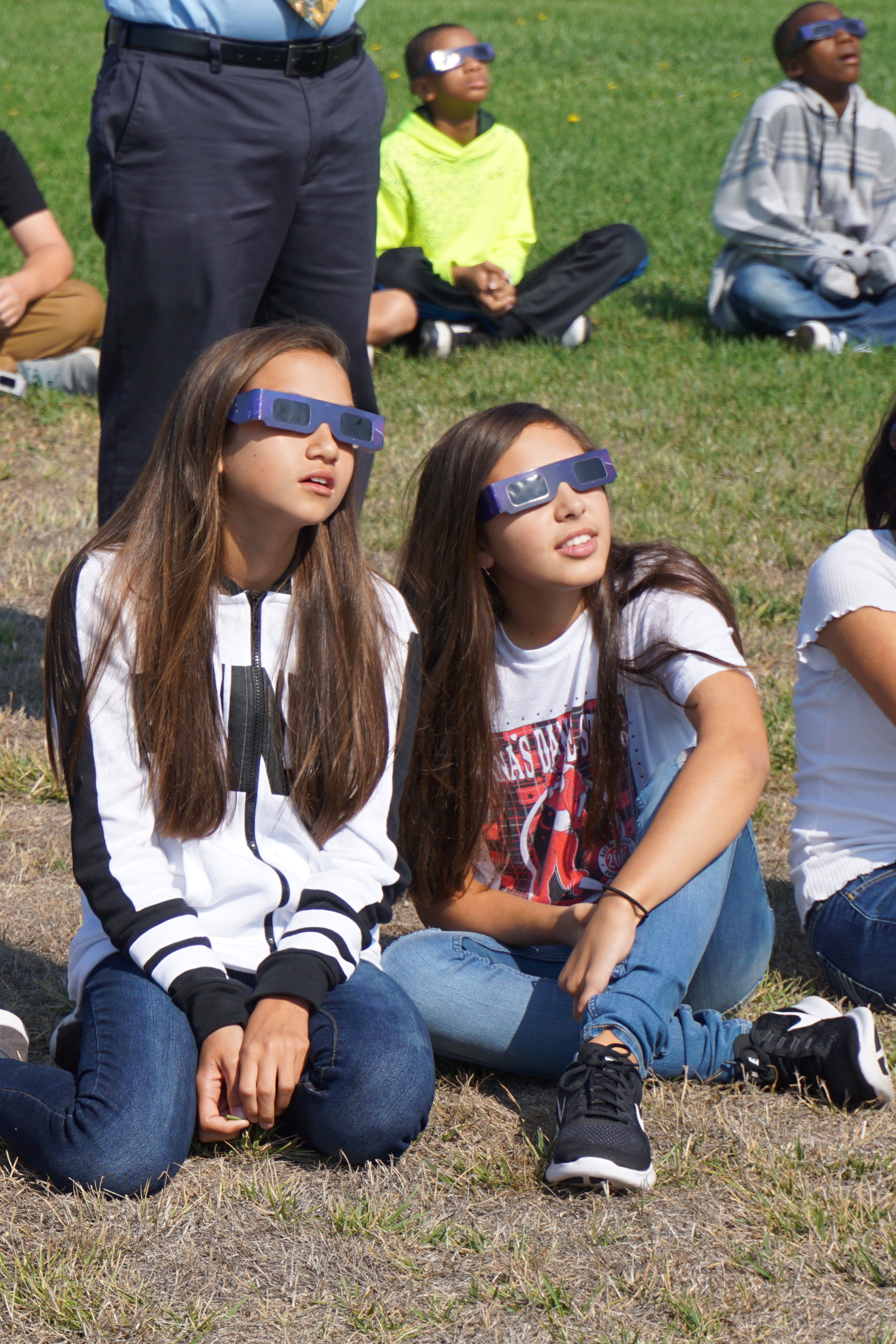 Science Department Chair Eileen Resnick proposed to Principal Alex Aasen that Martin Murphy hold a special assembly to view the solar eclipse and make it a school-wide learning experience, he said. Aasen found a website that sold inexpensive solar-filter cardboard glasses and purchased 1,000 to be used by the students, staff and parents.
Science Department Chair Eileen Resnick proposed to Principal Alex Aasen that Martin Murphy hold a special assembly to view the solar eclipse and make it a school-wide learning experience, he said. Aasen found a website that sold inexpensive solar-filter cardboard glasses and purchased 1,000 to be used by the students, staff and parents.
“Just on a personal level it’s a great experience for the kids to observe a phenomena like this,” Zavala said. “We want to make sure they have the appropriate (eclipse glasses) gear so it was really good for the principal and Eileen Resnick to really plan this out in the summer.”
Other schools in the district also made use of the eclipse. Charter School of Morgan Hill had a special assembly for the students. Some schools used pinhole “cameras” made of cardboard boxes to view the eclipse. Other schools had students watch on classroom televisions.
The students had fun together while they experienced the eclipse, Aasen said.
“I think a lot of the kids were surprised that it did get a little bit darker. I heard a lot of debate about if the moon was orange or the sun was orange,” he said. “It was a great learning opportunity for them to literally see the moon going in front of the sun and understanding where they are in the solar system. They also learned how rare an event this is. It just does not happen very often.”


